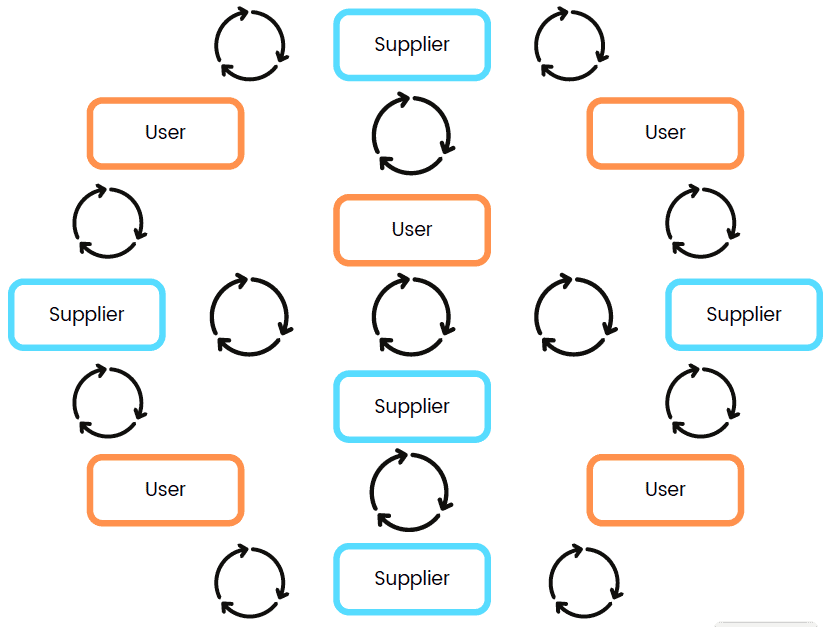Innovation is essential for all organisations that want to stay ahead of their competitors, create and disrupt markets, and deliver the outcomes needed to succeed. A business or organisation that does not recognise the need to innovate, or is not continuously innovating as part of its day-to-day business, is not sustainable.
It is important to recognise that innovation can come in many different forms - it is not just about product design, service development or new technology. At its simplest, innovation is:
"Turning Ideas Into Sustainable Value"
Ideas can come from anywhere in an organisation. New ways of working, team-level process improvement, changes to resource allocation, and different customer engagement models are some examples. Innovation happens when the ideas stick and create sustainable value.
The challenge is that innovation can be hard to embed. Turning ideas into sustainable value as part of day-to-day business is not easy. Unintended systemic barriers to innovation can arise due to the complex interaction of people, processes, technology and culture. Embedding innovation as a way of working that 'sticks' demands different thinking - and tipping points.
In what might often be described as complex innovation systems, ideas still come from people, and this will only happen in a conducive environment. As actors in the system, people have the greatest influence over innovation. Their capability to turn ideas into value and make change is only made possible through interaction with colleagues, suppliers, customers and other actors in the complex innovation ecosystem.
A key factor that increases innovation is establishing diversity of thinking. New connections are made, bringing different perspectives and enabling people and teams to join the dots and address important and complex challenges. People's interactions, whether planned or by chance, increase the supply of ideas. However, ultimately, it is culture that will determine whether the value of ideas can be unleashed, hindered or even blocked, making the difference between failure and success.
This paper identifies user-supplier collaboration as an ideal model to accelerate innovation that creates value. Planned and ad-hoc engagement within a connected network of users and suppliers can lead to the by-chance and deliberate generation and advancement of new ideas. Existing, new, latent, and even unknown demand can be uncovered, providing new perspectives.
Matching an increase in the supply of ideas with increased market demand for those ideas creates a virtuous and continuous cycle of user-supplier innovation. As this cycle is embedded, it becomes business-as-usual, allowing organisations and teams to readily acquire the skills, develop the processes and adopt the technologies, that can accelerate and scale up innovation.
Through the adoption of the user-supplier collaboration model and by following the system reframing process - tipping points can be identified that trigger irreversible change. This creates a culture of innovation that sticks - making continuous innovation business as usual.
Identifying Innovation Tipping Points
Engagement between users and suppliers provides a model for accelerating and increasing innovation. But the challenge is much wider – whilst users bring different perspectives to those of suppliers, the diversity of thought in any engagement may still be limited. This often means that changes to accelerate and increase innovation do not stick. The momentum gained during the creation of new ideas is lost as the barriers that have constrained innovation in the past persist.
The pace and scale of innovation is the outcome of a complex system. The challenge is to increase the success rate of turning concepts and ideas into products and services of value in a system that is influenced by organisational, market, and external factors.

System Reframing
Looking at the interaction of people, process, technology and culture and the history of the rail industry and innovation leads to an obvious conclusion:
Change that ‘sticks’ needs tipping points
Identifying tipping points requires ‘system reframing’. The challenge is to select those tipping points that turn concepts and ideas into behaviours and ways of working that make a positive impact, and support the successful development of new value-adding products and services.
Despite the many instances of lost opportunities, slow adoption and resistance to change, system reframing can be used to identify swift action, with transformational impact – overcoming the long-held belief that change must take time.
The Innovation System Reframing Process
The deliberate creation of innovation tipping points involves a continuous cycle of 'Innovation System Reframing' - baselining the current innovation system attributes and creating what-if scenarios using new system attributes. Through reframing, future tipping points can be identified and applied to trigger the irreversible changes that can stick, increasing the level of innovation. A market narrative, with compelling messages, communicated by key influencers, such as a first customer or early adopters, can increase demand, which changes the system attributes. The innovation beds in and so the virtuous circle of innovation continues.
In practice, this means creating tipping points that increase the supply of ideas at the same time as increasing the demand for innovative solutions. Matching supply with demand establishes an environment where those ideas that add most value are identified, developed, refined and tested based on proven user need.

User-Supplier Collaboration
One of the most effective models to accelerateinnovation and increase adoption is user-suppliercollaboration. It can generate and develop the new ideas that create sustainable value in products, services and continuous improvement - creating an interactive cycle of user-supplier innovation.
- Suppliers gain a competitive advantage fromdeep user engagement, acquiring information todrive innovation that solves real-world problems.
- Users play an increasing role in acceleratingadoption, complementing their own innovation-adoption activities, and benefitting from spilloverinnovations in supplier markets.
In a highly connected and complex industry, the cycle ofinnovation between users and manufacturers is not usually restricted to an exclusive 1-2-1 relationship. If an opportunity is significant or shared evidence leads toshared understanding, related innovations begin to pop upand thinking becomes contagious – innovation spilloverbetween networks of users and manufacturers is inevitable.

A user-supplier innovation reframing process breaks the constraints of industry 'group-think' and provides the opportunity for truly disruptive innovation. The use of Artificial Intelligence (AI) to solve user problems does not need the user to be an AI expert - but AI suppliers can help educate and inform users about the types of problems AI can solve. This, in turn, can trigger new supplier insights and more user-demand. Once again, the virtuous circle of innovation continues.
So What
Organisations and teams need to innovate to succeed. The world is constantly changing, so innovation must become 'business as usual', and innovation must be an integral part of every business model. However, innovation must have a purpose - innovation for innovation's sake will not guarantee success.
Ideas come from people and they have the ability to enact change, but the environment has to be conducive. If the culture is right, innovators and change-makers can thrive. The link between innovation and culture is strong - what people choose to do on a day-to-day basis and the way they do it has a significant impact on both the creation of ideas and, through collaboration, the creation of demand. Changing organisational habits, communication styles, rituals and risk appetite will change the culture and 'change the way innovation works'.
Embedding change means people must do things differently, not just once but continually. Making this type of irreversible change is not easy and can only be achieved by triggering tipping points that permanently change the innovation system.
Download the full report at:
Making Innovation Happen - Turning Ideas Into Sustainable Value
Additional Information
Tipping points can help make transformational change in your industry, business and teams
Does change need to happen fast?
Does change need to stick?
Do you know your tipping points?
Would you like to find out more?
Interimconsult can help you address the challenge of complex systems change at an industry, business and team level.
We can also help accelerate the pace and success of change that sticks and would be delighted to hear from you so please contact: paul@interimconsult.co.uk




